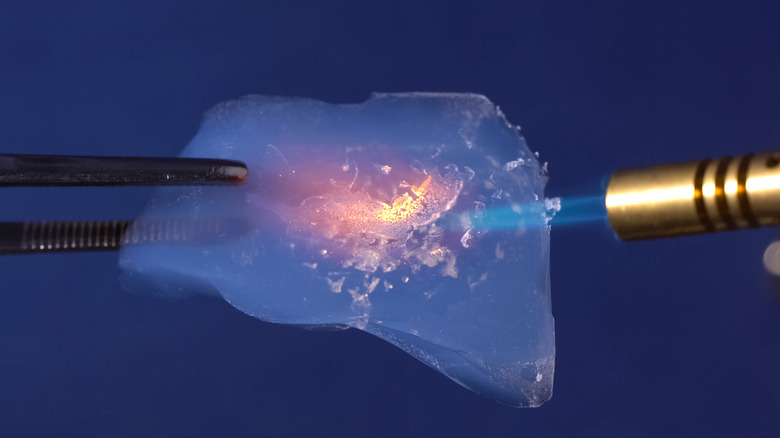The Next Generation Of Bulletproof Armor Isn't What You'd Expect
As human beings, we stand out in the animal kingdom for our abilities to conceptualize, innovate, and create. But despite all our modern marvels and best ideas, Mother Nature often has us beat thanks to a 4.5-billion-year head start full of tinkering and refining. While biomimicry isn't a novel concept, there are still plenty of avenues we've yet to explore. This is what led bioscience and chemistry and forensic science researchers at the University of Kent to team up and go looking for bulletproof materials in a surprising place: the human body.
According to a paper published on the preprint server bioRxiv, the scientists focused their research on "talin," a protein that helps human cells maintain their form. Talin's chemical structure includes 13 bundles of rodlike shapes that can fold up or unfold in response to mechanical forces.
This makes them natural shock absorbers: By modifying the first three of these bundles and turning the protein into a hydrogel, scientists were able to improve talin's ability to handle impact forces and shear strain.
These results are more than theoretical, though. The researchers went one step further by making a kind of basalt buckshot and firing it at their new material at supersonic speeds. Not only did the material — called talin shock absorbing material (TSAM) — survive, but it also took a hit from a piece of shrapnel from an aluminum plate used during the test. This would destroy modern industrial aerogels, but TSAM didn't mind at all.
Putting TSAM to use
Ballistic armor is one obvious application for TSAM, and as reported by Talker, the team is indeed already partnering with an unnamed private company to commercialize TSAM for this purpose. Body armor is used by both militaries and by civilian police forces to protect wearers from high-speed projectiles — including bullets and shrapnel.
But current armors use a combination of ceramics (like alumina) and woven fibers (like KEVLAR) to first blunt the leading edge of an incoming projectile, stopping its penetrative power (via HowStuffWorks). The problem is that the armor is usually ruined in the process, and one-time-use equipment is a lot more expensive.
In their paper, the scientists explain that TSAM's ability to fold itself back up after absorbing an impact means that it can be used multiple times, which has obvious advantages for both cost and practicality. Additionally, this first test of TSAM only modified the first three of talin's 13 rod bundles. More or different modifications might lead to improvements.
TSAM also performs better than modern aerogels in terms of dispensing heat from highspeed impacts. Aerogels are used to test how planes, spacecraft, and satellites might handle impacts from space debris and micrometeoroids, according to the researchers. But today, the aerogels get so hot that they either melt or deform the projectiles they catch.
TSAM's could capture the projectiles without overheating, giving engineers more information that could lead to safer aerospace designs. While these are new uses for talin, it turns out the key components have been in people all along.

